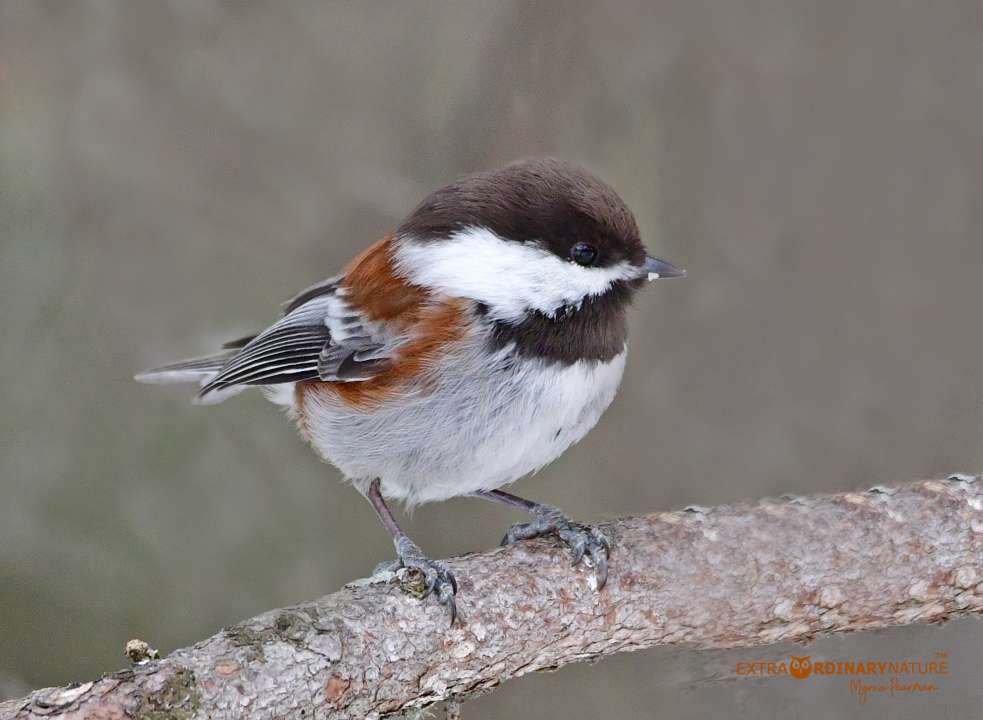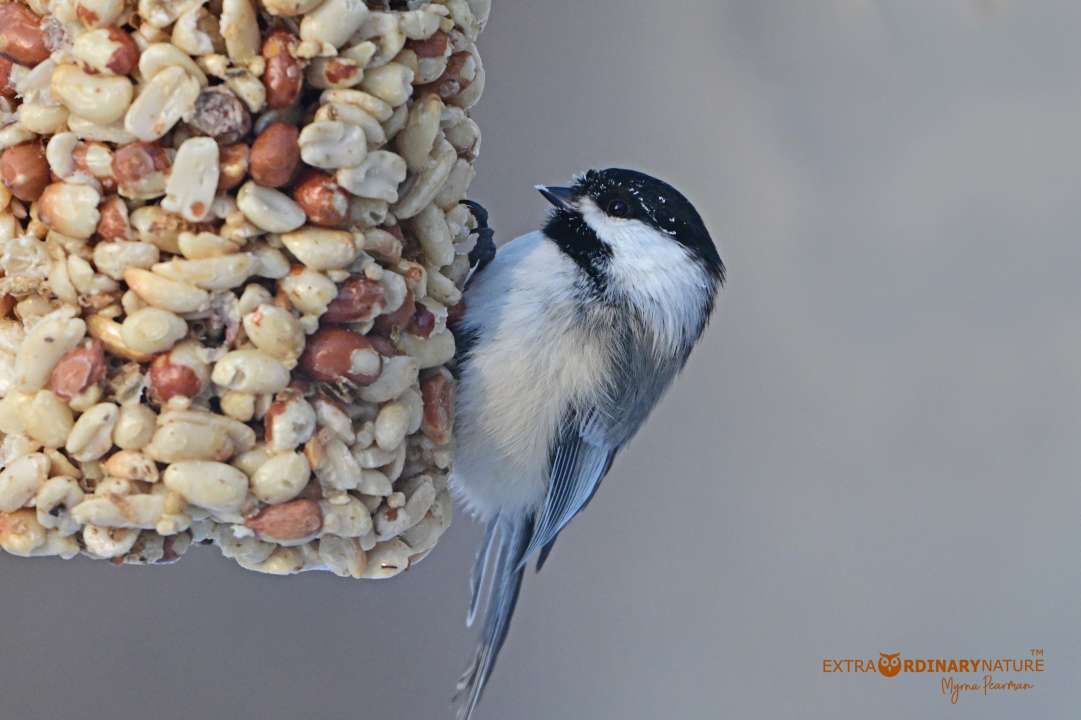Chickadees – Our February Cherubs!
By Myrna Pearman, Mother Nature’s Naturalist and Backyard Birding Expert

As I sit cradling a warm cup of coffee by the woodstove on a very cold winter’s morning, watching the chickadees at the feeder outside my front window, I can’t help but marvel at these little snow cherubs. How can they possibly endure such cold, harsh conditions?
Chickadees have evolved over millennia to survive harsh winter conditions. When cold weather hits, their tiny but highly revved engines kick into gear. To fuel these engines, they devote most of their waking hours to a ceaseless quest for food. If the weather is so cold that they lose more energy looking for food than they obtain from it in return, they will hunker down on a branch with their feathers fluffed up. This fluffing, caused by skin constriction, provides increased insulation by trapping air between the erect feathers. Their feet, which have a protective network of arteries that interweaves warm blood from their hearts with the veins carrying cold blood from their feet and legs, are covered up only during the bitterest of days.

Another key to winter survival is preparation. Starting in late fall, chickadees step up their efforts to cache a winter seed supply. They will haul seeds, along with other tidbits, and deftly wedge them into bark fissures and various hiding spots. These stored bits of food provide a reserve for later access.
Amazingly, the size of a chickadee hippocampus (the brain areas responsible for spatial organization and memory), expands in volume during the fall and winter. This increased memory capacity enables each individual to remember where it cached its food, and it is thought that the growth is linked to the rate at it stores food and remembers its cache locations. In the spring, when feats of memory are not critical to their survival, the hippocampus shrinks back to its normal size. The resulting memory loss means that general, but not specific, storage areas are remembered. However, their efforts to cache food have not been in vain because other chickadees, or even nuthatches and woodpeckers, will likely happen upon the stored morsels. They, too, might happen upon bits that have been cached by other individuals. The overall practice of food caching is like an avian “insurance policy:” food stored by the collective will eventually benefit each individual.
Just before nightfall, chickadees increase their food intake to ensure that their stomachs contain enough to sustain them until daylight. If the temperatures are fairly mild, a flock will roost together in the dense foliage of evergreens. On colder nights, each chickadee sleeps alone in the snug confines of a pre-selected winter roost cavity. On very cold nights the birds further conserve energy by going into nightly hypothermia. Finally, during extremely bitter temperatures, they will plunge under the snow (like grouse) in order to take advantage of the insulating snowpack.
Next time you watch your backyard chickadees on a bitter winter day, take a few minutes to appreciate what amazing little creatures they are!
Have more questions? Visit your local Buckerfield's and we'll be happy to help!



